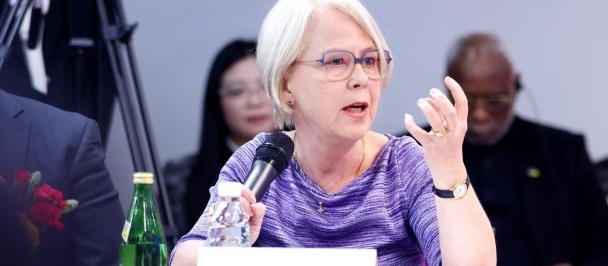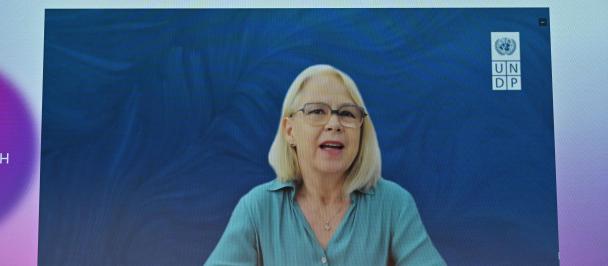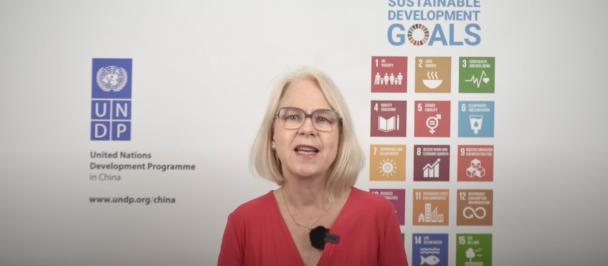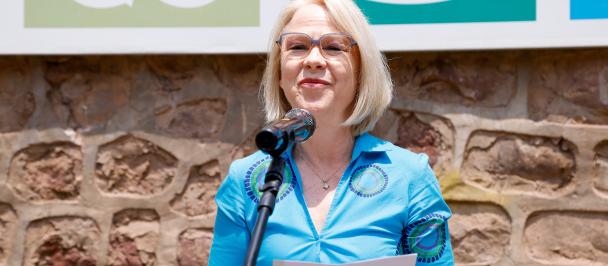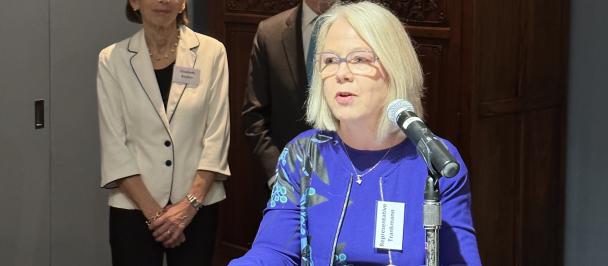Remarks by Ms Beate Trankmann at the Online Launch of the Women in STEM in Asia Pacific Study
March 27, 2024
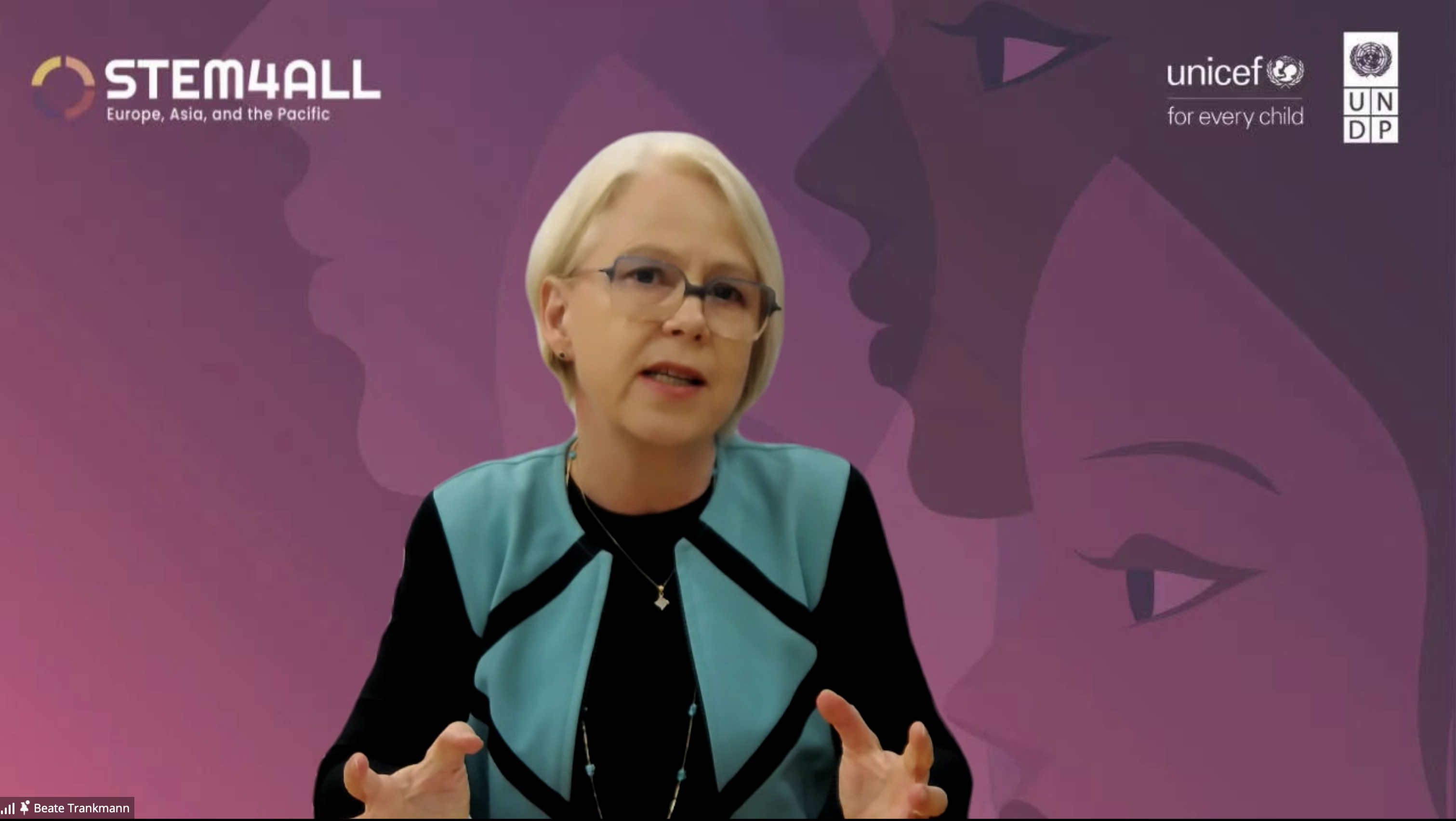
UNDP Resident Representative in China, Beate Trankmann, delivered remarks at the Virtual Launch of the Women in STEM in Asia Pacific Study and STEM4ALL RBAP RBEC Collaboration.
Colleagues, friends from across the Asia Pacific region and Europe,
Dear Partners and STEMnists,
It is great to join you all for today’s discussion.
We live in an era of rapid innovation in science and technology where cutting-edge research and new technological breakthroughs are transforming our world. They offer valuable solutions to address the daunting challenges facing humanity and our survival - from unchecked climate change and environmental degradation, to poverty and inequality.
However, unless these solutions are inclusive, where all have the opportunity not only to benefit from their application but crucially to participate in their design, their potential for sustainable development can’t be fully maximized.
Worse yet, they can lead to increasing digital divides that further marginalize vulnerable groups.
That is why at UNDP China, we have made the pursuit of gender equality in STEM a critical priority of our work. The regional study being launched today is the latest in a series of initiatives that the China office has been engaged in over the last several years - to promote women in science and technology, and explore solutions to close the gender divide in STEM fields.
They range from:
- Multiple advocacy campaigns with over 200 million total views - featuring female researchers and tech leaders sharing stories on gender biases in their professions, and encouraging women and girls to pursue interests in STEM, as well as
- Our STEM bootcamp which helped over 1,100 teenage girls in rural areas across China enhance their digital literacy, understanding of new technologies and SDG knowledge. These newly acquired skills led the girls to design innovative, tech-based solutions to address sustainable development challenges in their communities; and
- Two policy dialogues organized in collaboration with China Women’s Association for Science and Technology, that convened experts from 11 countries for an exchange on good practices to empower women in science and technology.
What we have learned from our experiences, particularly through the policy dialogues, is that the challenges facing women in STEM are not specific to China. They are common to most countries around the world. Indeed, women currently account for only around third of researchers globally and this number drops even lower in the Asia Pacific region.
"Today’s global challenges cannot to be solved with the brainpower of just half the world. Only by harnessing the ingenuity and contributions of all, can we hope to create a more inclusive and sustainable future for everyone."
This is what led us to work together with the gender team at RBAP last year to initiate this cross-country study that we are thrilled to be launching today.
The study highlights the challenges of gender equality in STEM in 5 countries- China, Thailand, Malaysia, the Maldives, and Indonesia, and outlines approaches for promoting and empowering more women to pursue STEM studies and careers.
By mapping out areas of convergence across countries, we can better understand the root causes of the STEM gender gap, learn how it is being tackled in different contexts, and leverage best practices across the region to improve women’s representation and leadership in these currently male-dominated fields.
I very much look forward to hearing shortly from our colleague Tshering who will share more details about the regional study including its specific key findings and recommendations.
In closing, let me express my sincere thanks to colleagues from our gender team in Bangkok and country offices throughout the region who have worked on this study and made this launch event possible.
At UNDP China, we are committed to building on the insights shared today together with all stakeholders including policymakers, educators, and the private sector, to design effective approaches to achieve gender equality in STEM.
It is obvious that today’s global challenges cannot to be solved with the brainpower of just half the world. Only by harnessing the ingenuity and contributions of all, can we hope to create a more inclusive and sustainable future for everyone.
Thank you!

 Locations
Locations